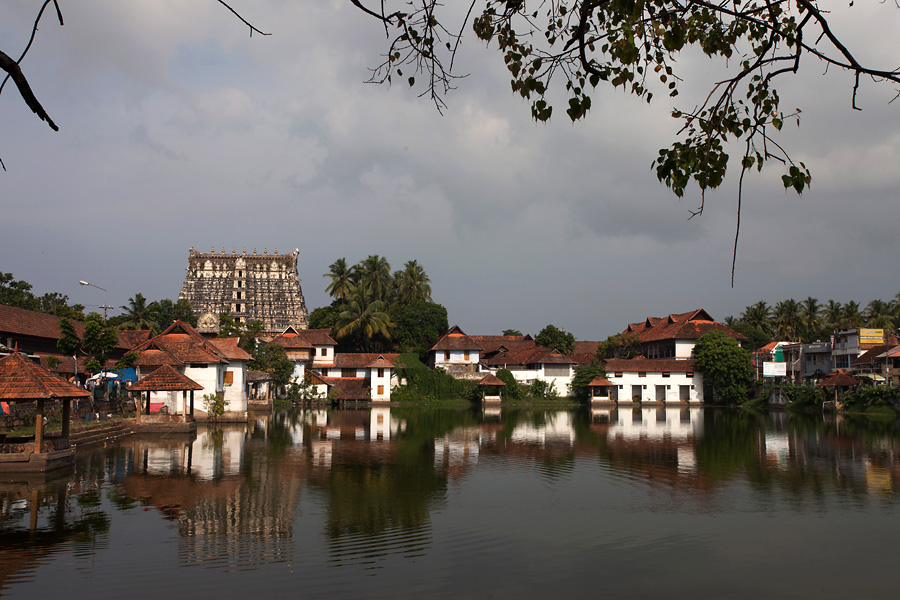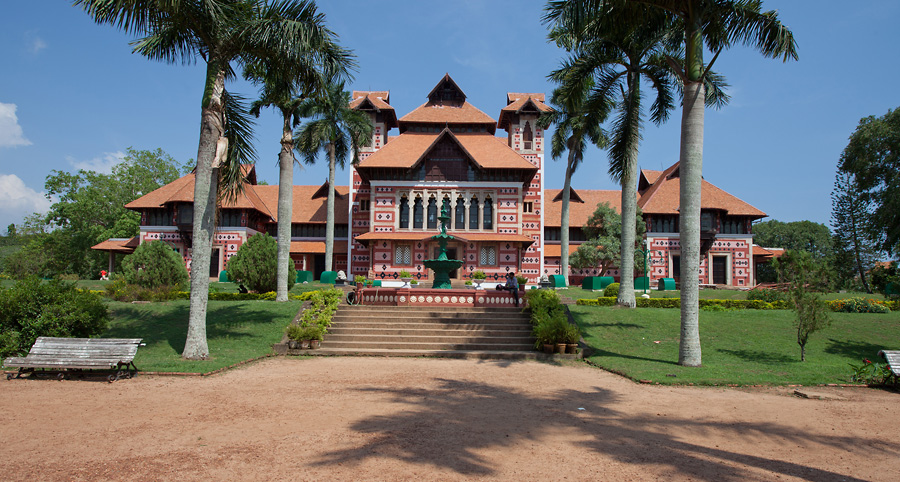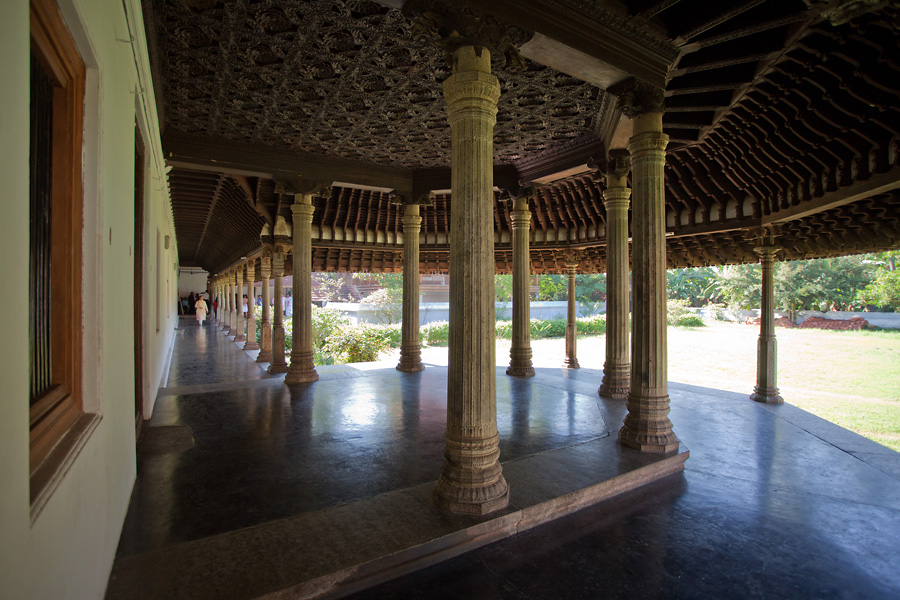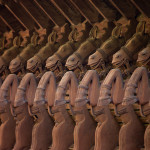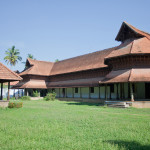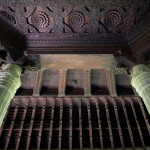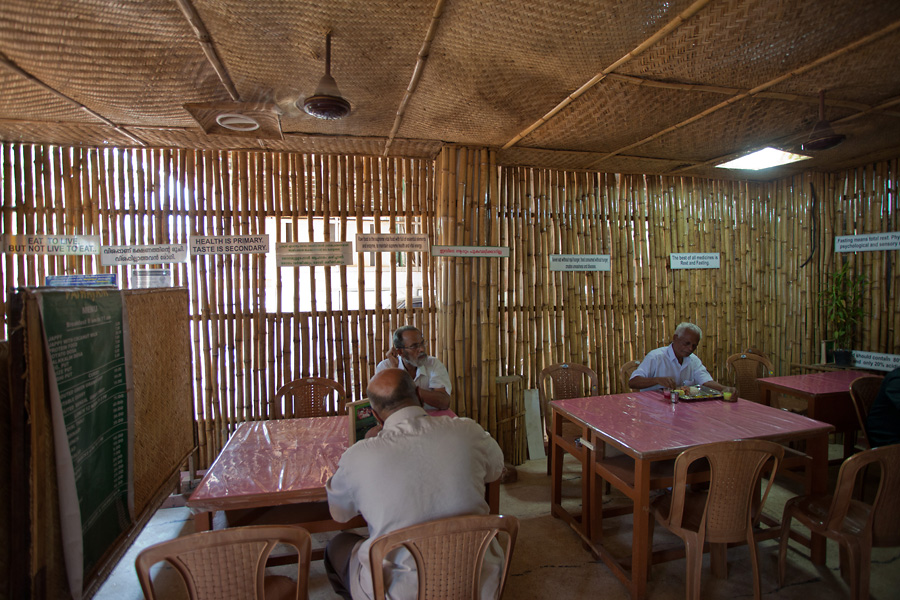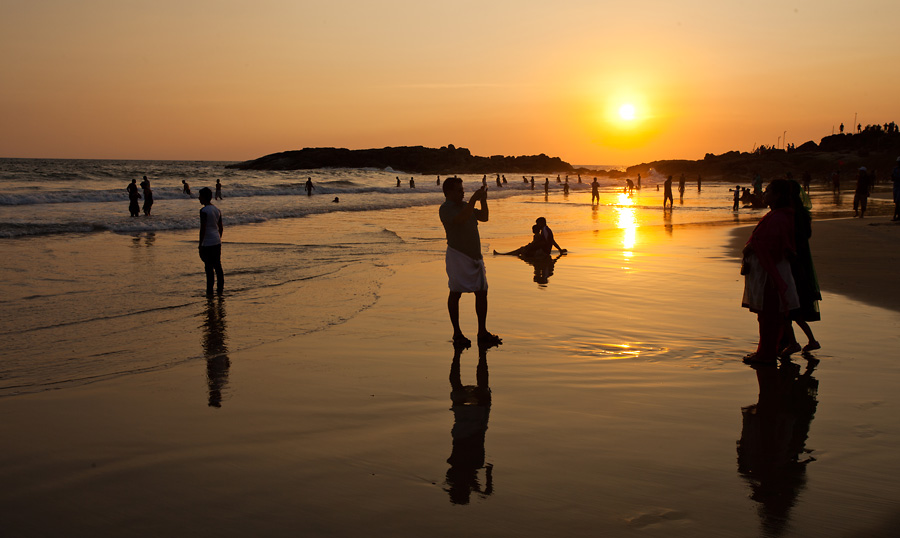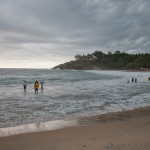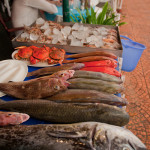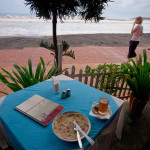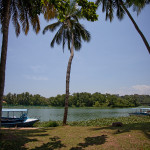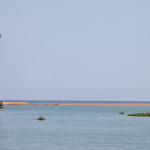Trivandrum Travel – Beaches, History and Ayurveda
A version of this story was published in Vara, the inflight magazine of Maldivian Airline.
I went to Trivandrum with an open mind to discover the city. I saw under the urban masquerade, the essence of what Kerala is known for – long beaches, coconut groves, unlimited Ayurveda and heritage buildings with a touch of history.
Besides the ubiquitous state-sponsored signs that welcome every visitor to the “God’s Own Country,” it would be hard to set Trivandram apart from any other city at its first sight. The signs of a true country of God, however, begins showing up on getting away from the wide arterial roads, when the city reveals itself as a leafy and charming seaside town disguised under the hood of an urban expanse.
Trivandrum’s large buildings and busy traffic is limited to the main MG Road that runs through its commercial center. Slip into the smaller streets leading out from here and it morphs into a quiet old place, more like a village where houses with spacious gardens, tall coconut trees and shaded empty roads replace the rush hour of the main street.
Even MG Road, dominated by large facades of glass and glitter has a touch of old that surfaces occasionally in the form of charming brick buildings that defy the new order. Driving through the busy traffic, I find the red facades of the college of fine arts and the public library building stand out distinctly amidst a series of hotels and shopping centers. Their Gothic arches and tall windows provide a glimpse of Trivandrum’s past, when this place was perhaps a quiet sea side town.
These buildings are but a small reflection of a number of old structures spread across the city, with a mix of Victorian styles and the ancient Kerala architecture. Excelling every such structure in grandeur and beauty is Napier Museum, a 150 years old two-story building painted in a deep hue of red and a light shade of pink that complement the tiled roof of similar colours. Flanked by the blue skies behind and the lush green grass surrounding it, the museum is a riot of colours when seen from a distance. Its entrance leads to a large hall with a high ceiling where light seeps in through a panel of stained glass windows. The upper portions follow the local tradition with its sloping roof and pointed arches. The museum houses a collection of archaeological artifacts including bronze idols, carvings of ivory and a temple chariot.
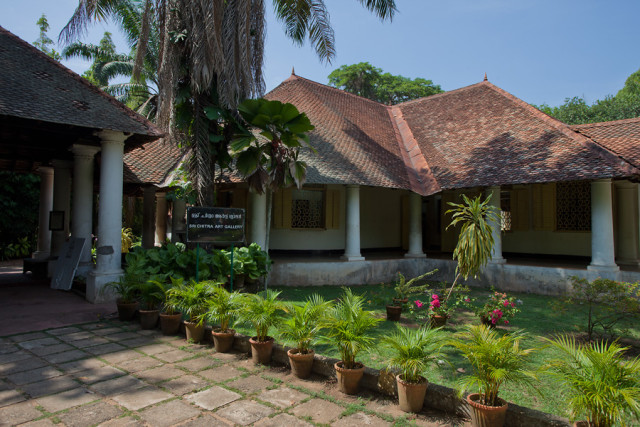 A section of Napier museum’s enclosure houses Sri Chitra Art Gallery, home to a collection of paintings by Raja Ravi Varma. Ravi Varma’s images of Damayanti talking to a swan and Jatayu attacked by Ravana stand out among the long line of exhibits. His paintings have a careful play of light and shadows that add a third dimension and bring his subjects to life. I was amazed by his depiction of South Indian Gypsies, in which a woman holds an infant in her lap as she plays a musical instrument, while the other children mind themselves. The expressions in each face in the image appear real and complete in this painting rendered to perfection by Varma’s brush.
A section of Napier museum’s enclosure houses Sri Chitra Art Gallery, home to a collection of paintings by Raja Ravi Varma. Ravi Varma’s images of Damayanti talking to a swan and Jatayu attacked by Ravana stand out among the long line of exhibits. His paintings have a careful play of light and shadows that add a third dimension and bring his subjects to life. I was amazed by his depiction of South Indian Gypsies, in which a woman holds an infant in her lap as she plays a musical instrument, while the other children mind themselves. The expressions in each face in the image appear real and complete in this painting rendered to perfection by Varma’s brush.
The largest of all the historical structures in Trivandrum is the centerpiece around which the entire city expanded. Padmanabhaswamy Temple, rebuilt in 18th century, is located in an enclosure as large as a football stadium. It is flanked by the calm Padmatheertham Tank, whose waters reflect the seven-storey tower at the temple entrance. The noise of the city never penetrates into the temple enclosure dominated by a circumambulation path decorated with long array of granite pillars. Carved on the base of these pillars is the statue of a lady holding an oil lamp, while the top portion hosts a lion-like mythical animal that roars into the visitors. The sanctum with its gilded pillars stands in a large open space at the center of the temple. Next to it is a smaller shrine where a platform has its roof filled with a series of fine wood carvings of the Hindu Pantheon, perhaps presenting one of the finest examples of Kerala’s wood art.
(Note: This story was written before a big stash of wealth was discovered in the temple)
Wood carvings are generously used in many of Kerala’s old buildings, seen most frequently in the majestic Kuthiramalika Palace adjoining Padmanabhaswamy Temple. The palace, surrounded by a plantain orchard, gets its name after a row of 122 horses (Kuthiramalika – Mansion of horses) on its façade carved in wood. Built in 1840s by the king of Travancore His Highness Swathi Thirunal, the palace had remained closed for more than a century after the demise of the king. It was opened to public in recent years and converted into a museum hosting the artifacts belonging to the royal family.
My guide at the palace took me on a quick tour and described the museum artifacts, starting with wooden statues of men in postures of traditional dances. The hallways of the palace are decorated with drooping chandeliers made of Belgian crystals. The king himself used to sit on one of the two huge thrones, one built using tusks of 22 elephants and another one made completely from crystal. The walls of the palace are decorated with the portraits of the royalty of Travancore, painted by Raja Raja Varma and Svetoslav Roerich. The upper floor of the palace makes generous use of teak to build airy galleries and has floral patterns carved on the roof panels.
Trivandrum’s connection to the past goes beyond its buildings, monuments and architecture. Not far from Kuthiramalika palace, CVN Kalari Institute is one of the many organizations that are working to preserve a martial tradition that is believed to be more than three thousand years old.
Kalaripayattu is an ancient martial art of Kerala in which opponents duel using several tools including sticks, knives and daggers. At CVN, a small bunch of students practice every morning under the expert guidance of their master Sathyan Gurukkal. The session starts with a rather long warm-up lasting more than thirty minutes in an arena half the size of a badminton court. The training commences using sticks for rookies, with slow and practiced moves that quickly gathers pace as the master and his pupil lock their sticks in swift movements. At times they move so quickly and forcefully, yet synchronize with such accuracy that an inch of error in judgement can leave them seriously injured.
The adept older students make deft moves as they counter each other with wooden swords and quickly shift from one end of the arena to other. I did not see any lightning fast Kalari moves that day, but experts can move quickly and attack the opponents with such speeds that within seconds the fighters make several skillful moves of offence and defence, traversing the entire arena in no time.
Injuries are obviously not uncommon in these learning sessions, which get treated using a tradition older than Kalari itself. Satyan Gurukkal tells me of a clinic in the premise where medicines are prepared locally from indigenous herbs.
The clinic uses the ancient tradition of Ayurveda medicine, which is not just a means of medication, but a system that governs everyday food habits and lifestyle. I get to see that in Pathayam, a small restaurant run by CV Gangadharan, which serves holistic food carefully prepared based on traditional methods by using organically grown ingredients.
The restaurant is an airy place, thanks to walls built with bamboo polls that allow plenty of air and natural light. My meal at Pathayam started with a bowl of fruit salad, followed by the main course that begins with several glasses of colourful liquids. They almost looked like medicines, which included gooseberry juice, a mildly spiced soup and a mix of buttermilk and lime. I expected the food to be bland if not bitter as health foods are likely to be, but was taken by surprise each time I sipped the juices and bit into the dishes.
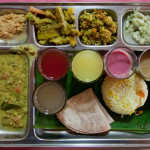 Gangadharan’s commitment to serve healthy food to his guests is evident from the signs plastered along the walls of the restaurant. ‘Diet cures more than doctor,’ says one such sign, while another one proclaims that ‘the road to health does not lead to pharmacy, but goes through the kitchen.’ These explain why Gangadharan has posted another sign that reads ‘pharmacy’ in front of his kitchen. While his philosophies impressed me enough, what really took me unprepared was that it did not compromise in the taste of my filling meal.
Gangadharan’s commitment to serve healthy food to his guests is evident from the signs plastered along the walls of the restaurant. ‘Diet cures more than doctor,’ says one such sign, while another one proclaims that ‘the road to health does not lead to pharmacy, but goes through the kitchen.’ These explain why Gangadharan has posted another sign that reads ‘pharmacy’ in front of his kitchen. While his philosophies impressed me enough, what really took me unprepared was that it did not compromise in the taste of my filling meal.
I saw another version of health food at the plush Somatheeram resort where I dined under the moonlit sky facing the sea and listening to the sound of the waves. The resident doctors at this ‘Ayurveda Resort’ examine the pulse of the guests and recommend a diet that helps remove imbalances in the body. Each dish in the restaurant’s large buffet spread is labelled ‘Vatha’, ‘Pitha’ or ‘Kapha,’ the three constitutions of body according to the tradition of Ayurveda. Guests are advised by doctors to consume only some of these types depending on their body’s balance. Steward Babu Angello lead me through the buffet spread and mentioned how every dish is carefully prepared based on its contribution to the three traits. The menu naturally included some surprises, like the bamboo shoot soup and sprouted green grams laced with honey.
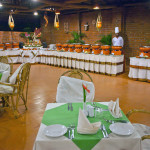 Somatheeram, like Pathayam, doesn’t compromise on taste in favour of health and ensures that every dish contributes to the good of body as well as the taste buds. That evening for me was an affair of soothing all my senses as I listened to musician Gopalakrishnan playing flute and watched the moon rise over coconut trees in the sky. The roar of the sea from Manalthreeram Beach occasionally travelled to my ears as I watched the white froth kiss the sands, sitting in my chair on the sea-facing hill.
Somatheeram, like Pathayam, doesn’t compromise on taste in favour of health and ensures that every dish contributes to the good of body as well as the taste buds. That evening for me was an affair of soothing all my senses as I listened to musician Gopalakrishnan playing flute and watched the moon rise over coconut trees in the sky. The roar of the sea from Manalthreeram Beach occasionally travelled to my ears as I watched the white froth kiss the sands, sitting in my chair on the sea-facing hill.
Somatheeram faced a quiet beach dominated by fishing boats and strong waves, but Kovalam beach across a hill provided an opportunity dip in the shallow waters. Kovalam consists of two crescent shaped beaches separated by a rocky hillock. Coconut trees line the edges of the northern part of the beach, while a promenade adjoining the southern beach hosts a long line of restaurants serving sea food and beer. Most people stick to the wider north beach where the sand is white and the sea is gentle.
On the evening I was there, restaurateurs invited me to pick from a variety of freshly caught fish as I walked along the promenade. Instead, I settled for a fine concoction of ginger-lemon tea served with honey at the Malabar Café, watching the setting sun and the waves crashing into the narrow strip of sand between the promenade and the sea.
The best views of Kovalam’s two crescent beaches are from the tall lighthouse at the southern edge, which offers a bird’s eye view of both the beaches. Looking down from the lighthouse hill, I become aware of an expanse of the blue ocean that stretched into the horizon to the west, complemented by another sea of coconut trees that spread as far as I can see in the other direction.
The god’s own country seems complete by itself, with its tile-roofed buildings, ancient healing traditions and a long line of beaches, but the local tourism department wants to take no chances in ensuring that the visitors have a good time. The government has built a tourist park to the north of the town where Veli Lake skirts the sea, with just a narrow stretch of sand separating the ocean and the lake. A floating restaurant and speed boat rides on the lake serve the purpose of amusement, but the best experience of the park is to walk along the sand bank that cuts through the ocean and the lake, keeping a careful watch on the waves and evading the occasional strong flap that breaches the sand barrier.
As I returned from Veli and walked along one of the busy streets, I noticed a small sign listing out places of interest near the city, which confidently concluded with a punch line that said, ‘You have come to the right place.’ The sign had summed my feelings for Trivandrum in fewest and best possible words.
Trivandrum Information – Things to see and do
Trivandrum’s best landmarks are its old buildings that are a mix of Gothic and local architecture, many of them more than a century old. Kanakakunnu Palace and Napier Museum are the best examples of such buildings with tiled roofs and pointed arches. Napier museum also hosts many ancient artifacts and statues. Also, do not miss the paintings of Raja Ravi Varma at nearby Sri Chitra Art Gallery.
At the southern part of the city are even older structures that adhere to Kerala’s traditional style of construction. Visit the Padmanabhaswamy Temple, around which the city of Trivandrum expanded. Kuthiramalika Palace Museum with its long hallways has excellent wood carvings.
Just south of Trivandrum is a long sea shore dominated by the well known Kovalam Beach. Buy fresh fish here and have them fried to appease your taste buds. At the northern end of the town is Veli Tourist Park, where state tourism department runs a floating restaurant in a lake adjoining the sea.
Do not forget to try Ayurveda Massages that Kerala is well known for. If you are staying here for long, go on a recommended Ayurveda diet to heal your body from toxins.
An hour’s drive from Trivandrum is Padmanabhapuram Palace, the erstwhile palace and capital of Travancore Kings. Driving further for another along the same way takes you to Kanyakumari, the southernmost point of India’s mainland. Also on the same route, just 30 minutes south of the city is Balaramapuram, known for its traditional handloom weavers.
